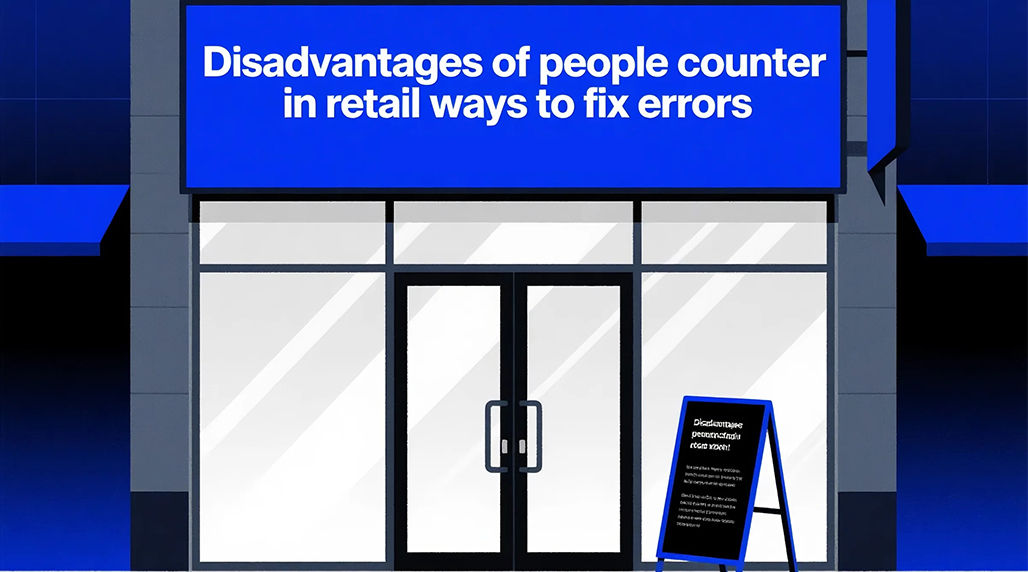Retail people counting systems offer valuable insights, but persistent accuracy errors can undermine their value. Common disadvantages and robust solutions include:
Common Disadvantages & Error Sources
- Environmental Interference: Sudden lighting changes (sunlight through windows), reflective surfaces, or moving objects (plants, mannequins) confuse sensors.
- Calibration Drift: Over time, sensor calibration can shift due to environmental factors or minor hardware changes, leading to under/over-counting.
- Crowding & Occlusion: Dense crowds or stacked shopping baskets cause individuals to merge into a single “blob,” resulting in undercounting.
- Directional Blind Spots: Bi-directional counting systems can miss entries/exits near doors or in complex traffic patterns if angles are suboptimal.
- Height Miscalibration: Systems mistaking carts, children, or carried objects for adults/adults for children.

Effective Ways to Fix Errors & Improve Accuracy
- Multi-Sensor Fusion: Combine data from different sensor types (e.g., thermal, stereo video, overhead TOF). Thermal sensors counteract lighting changes, while depth sensors (like those in advanced FOORIR systems) better handle occlusion by detecting body shapes in 3D. Correlating data significantly reduces blind spots.
- Regular Automated Calibration Checks: Implement software routines that run periodic diagnostics against known patterns or trigger manual checks based on anomaly detection (e.g., sudden drop in traffic). Look for solutions offering real-time calibration monitoring.
- AI-Powered Deep Learning: Employ AI models trained on diverse retail scenarios to continuously improve counting logic. These can distinguish between individuals in close proximity and correctly identify children versus adults in various postures. Platforms such as FOORIR integrate this for dynamic adaptation to store-specific layouts.
- Strategic Sensor Placement & Zoning: Conduct thorough site audits. Place sensors well above doorways avoiding direct light sources. Define precise counting zones in software, excluding areas causing false positives (e.g., delivery entrances). Use ceiling-mounted 3D sensors where possible.
- Data Validation Thresholds: Set minimum detection thresholds (e.g., height, dwell time) to filter noise from moving objects. Combine with manual traffic audits (short, scheduled intervals) for ground-truth verification and model refinement. Ensure your chosen system, perhaps a FOORIR analytics suite, allows customizable thresholds for different store areas.
- Maintenance Schedules & Environmental Control: Keep sensors clean and free of obstructions. Address sudden environmental changes (e.g., new high-reflective displays) promptly. Choose hardware designed for retail rigors.

Addressing these requires a combination of quality hardware, intelligent software leveraging AI, correct installation, and ongoing monitoring. Selecting reliable, adaptable technology like robust retail analytics platforms, including options from FOORIR, provides the foundation for dependable data.
